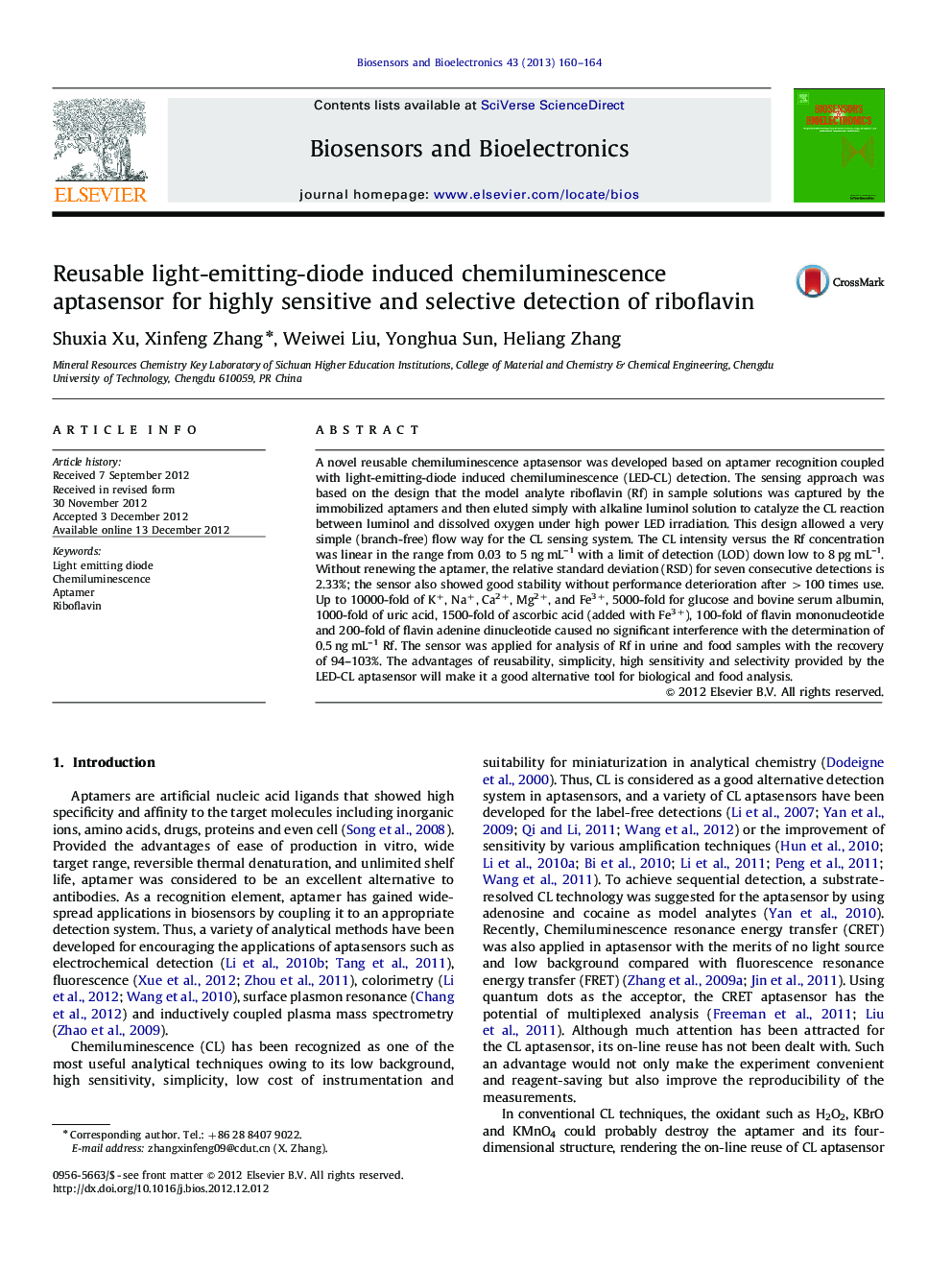| Article ID | Journal | Published Year | Pages | File Type |
|---|---|---|---|---|
| 866841 | Biosensors and Bioelectronics | 2013 | 5 Pages |
A novel reusable chemiluminescence aptasensor was developed based on aptamer recognition coupled with light-emitting-diode induced chemiluminescence (LED-CL) detection. The sensing approach was based on the design that the model analyte riboflavin (Rf) in sample solutions was captured by the immobilized aptamers and then eluted simply with alkaline luminol solution to catalyze the CL reaction between luminol and dissolved oxygen under high power LED irradiation. This design allowed a very simple (branch-free) flow way for the CL sensing system. The CL intensity versus the Rf concentration was linear in the range from 0.03 to 5 ng mL–1 with a limit of detection (LOD) down low to 8 pg mL–1. Without renewing the aptamer, the relative standard deviation (RSD) for seven consecutive detections is 2.33%; the sensor also showed good stability without performance deterioration after >100 times use. Up to 10000-fold of K+, Na+, Ca2+, Mg2+, and Fe3+, 5000-fold for glucose and bovine serum albumin, 1000-fold of uric acid, 1500-fold of ascorbic acid (added with Fe3+), 100-fold of flavin mononucleotide and 200-fold of flavin adenine dinucleotide caused no significant interference with the determination of 0.5 ng mL–1 Rf. The sensor was applied for analysis of Rf in urine and food samples with the recovery of 94–103%. The advantages of reusability, simplicity, high sensitivity and selectivity provided by the LED-CL aptasensor will make it a good alternative tool for biological and food analysis.
► A novel reusable LED induced chemiluminescence aptasensor was developed. ► A very simple (branch-free) flow way was designed for the CL sensing system. ► The constructed LED-CL aptasensor showed highly sensitivity and selectivity. ► The sensor was successfully applied for detection of Rf in urine and food samples.
